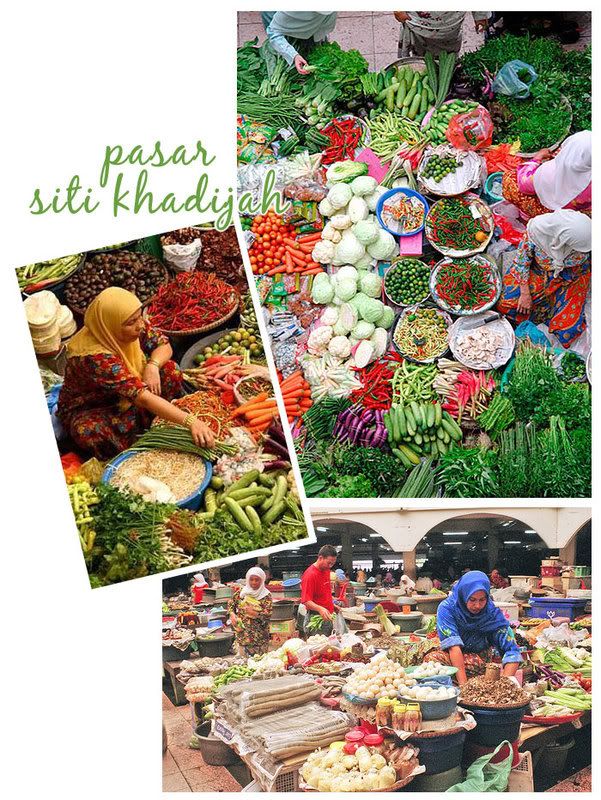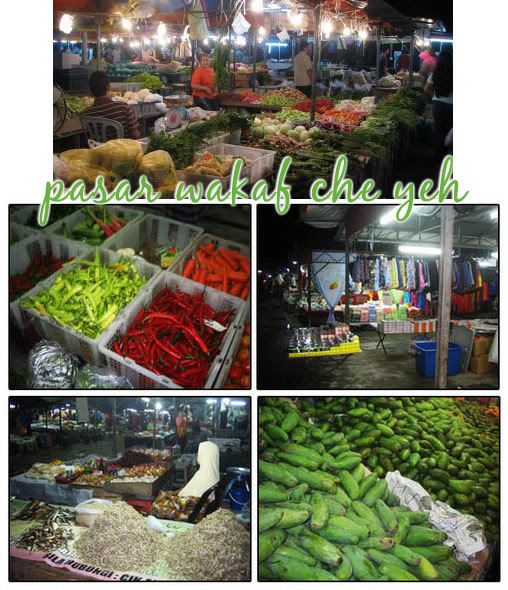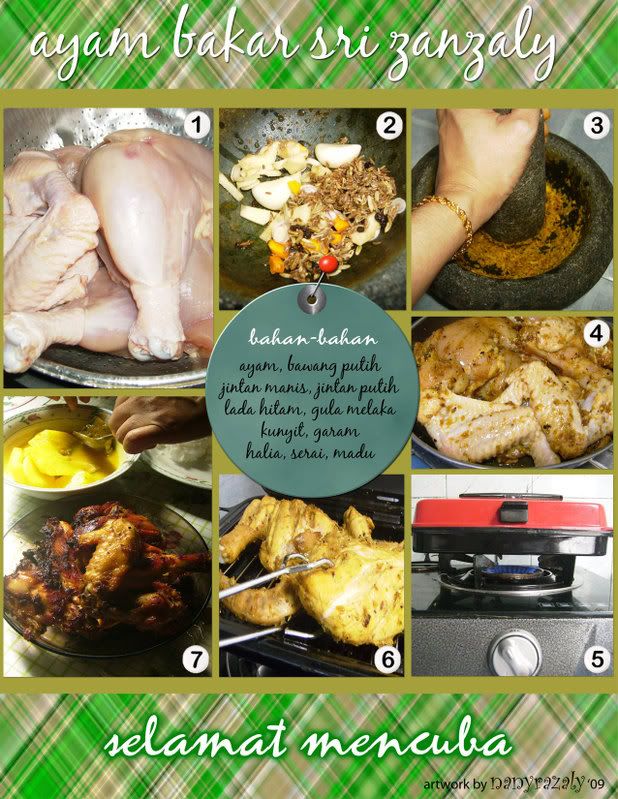come, have a breakfast with me...
First time visitors to Kelantan would not fail to be awed by the sheer variety of food that constitutes a typical Kelantan breakfast spread. Suffice to say, anything rice-based is a huge favourite.
Most people would have heard of items such as Nasi Belauk, literally nasi berlauk in standard Malay, Nasi Kerabu, which is not only white in colour but can also be bluish, and known by the locals as Nasi Kerabu Hitam; and then the yellow-coloured nasi called Kerabu Kuning. Finally, there's the Nasi Dagang, made from glutinous rice, a dish that is also popular in Terengganu. The Kelantan brown-coloured glutinotfs rice whilst the Terengganu one is white. Some of the common accompaniments include fish, especially tuna or better known as Ikan Tongkol or Ikan Aya by the Kelantanese, or chicken in curry. You might also get some eggs to go with it.
The locals love to eat out. It's no surprise then that stalls commonly open for business as early as 6.30am every morning. More so with those located near mosques as they cater to the early morning congregation that would make a beeline for breakfast soon after completing their Fajar prayers. Some would have their meal there while others might opt to have the food wrapped in banana leaves to be enjoyed with the rest of the family at home. With such variety to choose from, it's quite a monumental task to be able to remember each family member's preferences. Even something as minute as whether to include the Sambal (chilli paste) or not for the younger ones is very important.
Of course, the taste of the spread as well as the price differs from one stall to another. And because of this, some stalls are more patronized than others. Suffice to say; the locals would know best where to go. But for newcomers, a good tip would be to look to where the crowd is. Chances are a stall that is crowded would be a favourite with the locals, whether it's for the taste of the food or the pricing. Most would not think twice to wait a while before being served. Those who eat in are normally given service priority over those wanting to take-away.
Nasi Belauk - several accompanying dishes that include chicken, fish or meat cooked in curry can be selected. It's also possible to have a combination of the lauk served together.
Nasi Dagang is either made from white glutinous rice or brown rice. It can be eaten with accompanying dishes of either curried tuna or chicken. Slices of boiled egg are often included. The lauk can also be taken in combination.
 Nasi Kerabu - Comes in two versions. The first is the Nasi Kerabu Tumis (with sauce made from coconut milk and other condiments), and then there's the Nasi Kerabu Ulam (without the sauce). From here, it's further differentiated by the colour of the rice, which can be white, black (or bluish) or yellow. The Ulams comprise sliced leaves of Kesom (Vietnamese mint), Daun Serai Kayu (Samak), Bunga Kantan (Red Ginger Plant Bulb), long beans or cucumber. Should the usual garnishing not be available, some might opt to use bean sprouts or sliced cabbages instead.
Nasi Kerabu - Comes in two versions. The first is the Nasi Kerabu Tumis (with sauce made from coconut milk and other condiments), and then there's the Nasi Kerabu Ulam (without the sauce). From here, it's further differentiated by the colour of the rice, which can be white, black (or bluish) or yellow. The Ulams comprise sliced leaves of Kesom (Vietnamese mint), Daun Serai Kayu (Samak), Bunga Kantan (Red Ginger Plant Bulb), long beans or cucumber. Should the usual garnishing not be available, some might opt to use bean sprouts or sliced cabbages instead.
A dash of Budu (fish sauce) is a must but if you're not keen, just inform the seller to exclude it. Should you be feeling slightly adventurous and want to see what all the fuss is about with the Budu, have it but make sure that you cast your eyes elsewhere when they're preparing your plate or packing it for you to take-away.
For all the Nasi Kerabu variants, an extra dish in the form of grilled chicken or beef is sometimes available. It can be the 'killer' dish at some stalls and is guaranteed to draw the crowd.
Nasi Tumpang - similar in taste and method of cooking except that it's placed in a conical sheath of banana leaf with layers of lauk such as fish curry, prawn curry and Sambal Daging (Serunding Daging or meat floss).
Nasi Kapit - Soft boiled rice compressed into a rice cake and served with groundnut sauce accompanied by a few sticks of satay. The rice is considered the main dish. It also known as Nasi Impit.
Nasi Lemak and Nasi Goreng are also available here but are not as commonly found as in other states. Aside from the main breakfast spread, there are also other traditional cakes available such as the Che Mek Molek, made of deep fried boiled sweet potatoes and flour dough with a dash of sugar inside.
Che Mek Molek means a beautiful lady in Malay. As beautiful as it names the taste is even better. This kuih is best eaten while it is hot with tea or coffee. Just name the occasion, you will not be disappointed. The can be found especially during the fasting month of Ramadhan. Sold at roadside stalls and sometimes served as desserts in restaurants.
Then there's the Pulut Pagi, glutinous rice cooked in palm sugar. The plain white glutinous rice variety, normally eaten with fried salted fish is known as Pulut lkan Kering. Both types of Pulut are dipped in grated coconut with a dash of salt added. There's also the Pulut Bakar which is sweetened glutinous rice mixed with coconut milk and wrapped in banana leaf before being grilled in special containers.

Many make shift stalls tend to sprout up along roadsides during the rainy season. There, you'll be able to find all kinds of Ubis (tubers) such as Ubi Kayu (tapioca), Keledek (sweet potatoes), Ubi Badak, Keladi (yam) and Ubi Keling or Ubi Kemili (as its known outside of Kelantan), great breakfast food that's eaten by boiling to a certain degree of softness.
The sheer variety available for breakfast is simply too numerous to mention here. Why not pay Kelantan a visit and see just what we mean. It's the best way to sample some great food and learn all about the delights from the locals.
Source: QIADAH | Written By: MOHD ZAWAWI AHMAD
Read more...










 my family
my family

 noble art
noble art




























